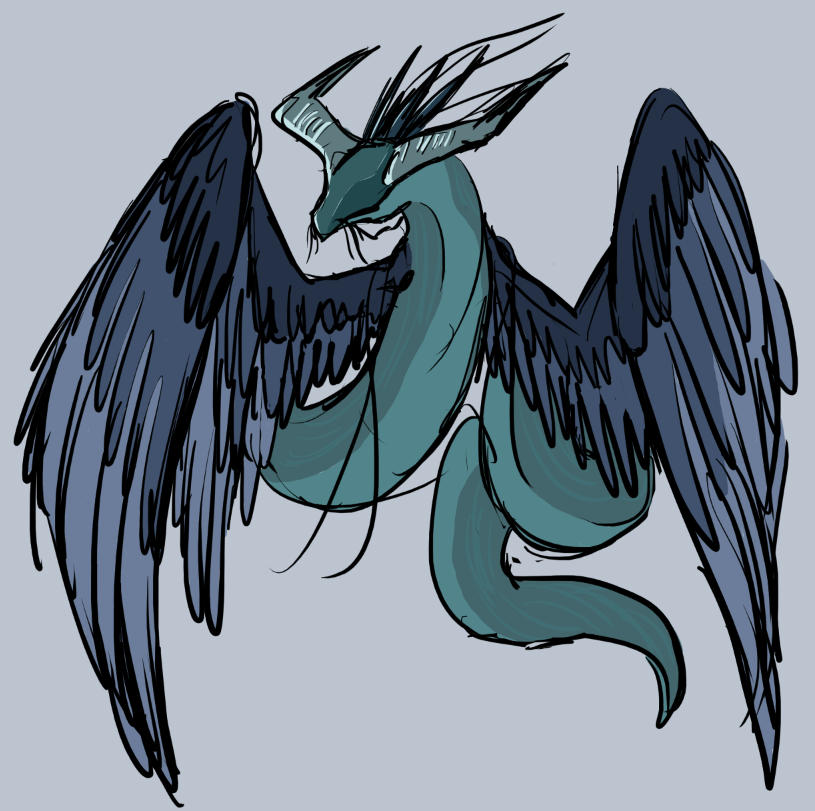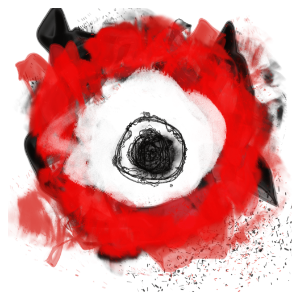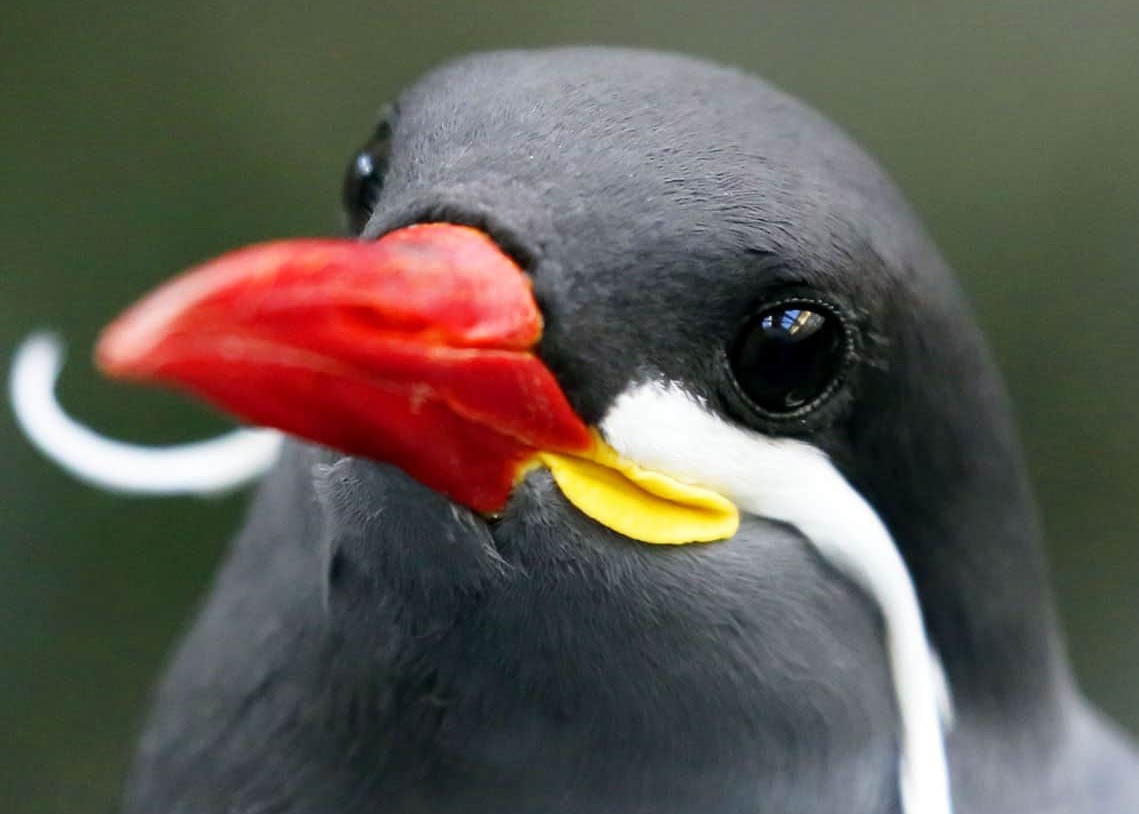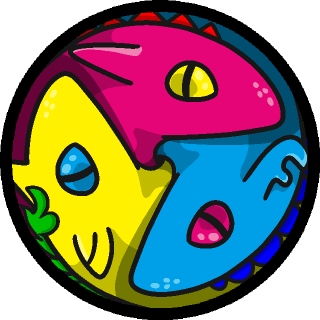Norrab
Internal conflict has thrown Norrab into an everlasting state of instability. The arrival of the adamnan species eight hundred years ago, and their colonisation of much of the planet, caused tremendous issues for native norrabians.
Norrab is the tenth planet orbiting Cheem, in the solar system of the same name. While it is largely focused on resolving conflict on the planet itself, inhabitants of Norrab have made their way into space. Many have migrated from Norrab and now live on other planets in the Cheem System, large groups on Rubrinea and Maresa.
Adamne and Norrab are in a planetary marriage; the two planets orbit each other, with five smaller satellites circling both planets at the same time.
Geography, Location & Climate
Continents
Alarma
Alarma is the largest and westernmost continent, forming its own landmass. Alarma is north of Terasa and west of Aridara and Timbera.
The continent is dominated by adamnans, lands terraformed to suit their particular needs. Throughout the last eight hundred years it has suffered from the Adamnification of Norrab, and hundreds of norrabian ethnic groups have seen their end.
Aridara
Aridara is the largest continent on Norrab by population. It is the birthplace of norrabians, hundreds of thousand of years of culture and history. It is east of Alarma and north of Suvai, and on the same landmass as Timbera.
The continent is mostly comprised of desert, sub-tropical, and tropical environments, with over half of the continent made up of desert and savannas.
Suvai
Suvai is the easternmost continent on Norrab, east of Terasa and south of Aridara and Timbera. Several Veins of Norrab cut through Suvai's western coastlines, as crashing waves rip apart bluerock cliffs. Like its continental neighbour Terasa, Suvai has a rather small population, around seventy million.
Being such an isolated continent, Suvai has developed rather unique ecosystems. Most of its inhabiting species cannot be found anywhere else on the planet. Many of its inhabiting species are inanimals, wielding different forms of magic. Adamnans specifically chose to avoid this continent eight hundred years ago, during the beginning of the Adamnification of Norrab, leaving native norrabians alone and at peace.
Terasa
Terasa is the southernmost continent. It has the smallest population out of the five continents, with a combined fifty million adamnans and norrabians. Despite both species being incredibly well adaptable to hot, dry climates, Terasa proves just too much for most.
The continent is a deserted hellscape, riddled with mile-long sandworms, hungry dragons, and a plethora of dangerous localities. Those that live in Terasa have learnt to hunt as if their life depends on it, because it really does.
Timbera
Timbera is a heavily forested continent. It sits on the Timbera Plate, a large tectonic plate where its convergent boundary with the Aridara Plate has formed the Sandaris Highlands and mountains. Its northern teal forests are an iconic part of the continent, and what most identify the region with.
Timbera's population is roughly two-thirds norrabian, one third adamnan. Norrabians have successfully pushed back against adamnans throughout much of Timbera, although the latter still attempt to wiggle their way into norrabian society and claim it as their own.
Oceans
83% of Norrab's surface is ocean. The global ocean has a bathymetric depth of 5.2 kilometres, the deepest points in the Veins of Norrab, mysterious trenches covering the planet's oceanbed. The bed is as varied as the terrain of the surface, with underwater mountains, volcanoes, canyons, and other geological landmarks present worldwide.
Biomes in Norrab's oceans are as unique as those on land. Different climates, temperatures, and salinities cause different organisms to inhabit certain regions. More volcanic regions, particularly around southern Terasa and Suvai, are home to vibrant, red-hot biomes.
The Euran Ocean features streams of pure blood which have brought about some peculiar species. Blood mites feast upon massive whalefalls, the remains of deceased titanic cetacean species that float down to the bottom of the seabeds.
Upon their descent they are picked apart by a number of other organisms, such as daydreamer sharks and hullsinkers, two predators that grow over sixteen metres in length, some of the largest animals to inhabit the trenches.
The Kahalaie Ocean is the most ecologically diverse of the oceans. It stretches from western Alarma to Eastern Timbera. The deepest parts of the ocean reach temperatures of two degrees Celsius, and is a very warm ocean.
The ocean's trenches are most famous for the abundance of kahalaie conches, often fished up from massive deep-sea industrial fishing nets. These conches are six inches in length and have a habit of eating these fishing nets.
The Latica Ocean is a large ocean found between continents Aridara and Alarma. Its breathtaking expansiveness is combatted by an oversaturation of dangerous lifeforms and unusual landmarks.
The ocean's surface is inhabited by around three million adamnans, in small floating cities known as Sea Cells.
Thousand year old legends say that the Titani Ocean's swirling pattern is the deceased body of a world serpent that wrapped around the globe with a tight grip. The trenches were battle scars from fighting otherworldly beings and monsters.
The Titani Ocean is breathtaking, bioluminescent murals of wiggling and swirling planktons painted on underwater cliffsides. Tiny deep-sea parrotfish peck at coral along these ocean walls, while opportunistic predators dart at their distracted prey.
Ghostly apparitions dance through the trenches of the Vexen Ocean. The unusual composition of these waters means that gatherings of different magics condense to form liquids, which blend with the ocean to form stunning displays.
Many organisms in the Vexen Ocean have ties to certain magics, such as liquemancers, semi-sophontic eel-like fish with the ability to magically liquefy their prey.
Satellites
Jhouan Colonies
Several small groups of norrabians live on Jhoua. They fled their planet hundreds of years ago and have lived peacefully on this moon ever since, with self-sufficient colonies thriving amongst native lifeforms. They do not take too kindly to visitors, the last expedition from Norrab to Jhoua ninety-five years ago.Norrab has five natural satellites that orbit Adamne and itself. Only one of these satellites influence Norrab's tides, that being Jhoua. With such an awkward orbital path, tides in eastern Suvai can rise and fall almost twenty metres.
Etera is the largest of the five moons, featuring a small set of icy rings. Etera is home to the eterans, small mammalian sophonts with a strong grasp on glaciamancy. Norrab and Etera operate a civil relationship, eterans keeping a distance from adamnans.
Mahaan and Whei are ruled by adamnans, landing on this planet the same time as Norrab. These two temperate rocky planets are predominantly grassland and savanna, with several small landlocked oceans. Whei is unique amongst Norrab's moons, for it has its own submoon, Whei Jr.
Vala is the smallest of the five moons and is not currently inhabited by any sophonts. A delicate crystalline structure covers the surface of the moon. Anything that enters the atmosphere has catastrophic consequences, as it disrupts the moon and causes crystalquakes, the precious minerals collapsing under the altered atmospheric pressure.
History
Prehistory
The surface of Norrab once congregated as one supercontinent, Norrabia. This massive stretch of land eventually fractured, and over millions of years continents diverged from one another. The Aridara and Timbera plates collided, forming the landmass Timberidara.
Dragons ruled Norrab between 150 and 45 million years ago. These animals evolved independently on the two main landmasses during the Terasic Period, 150 million years ago. Powered flight let these animals migrate across the entire planet, and they quickly rose to the top of every single food web.
They were almost completely wiped out 45 million years ago after an asteroid strike hit northern Aridara, fifty miles north of Cazan Island. The only dragons left on the planet are found in Terasa.
Norrabian Evolution
Norrabians first evolved around five million years ago, in central Aridara. Their lineage is similar to those of humans and other hominids; norrabians and other apes evolved to stand upright, slowly progressing and learning to use tools, advanced communication, which catapulted them towards the sophontic status.
Early norrabians lost their fur and evolved fully formed thumbs, which gave them significantly better grip and aim compared to relatives. While norrabians only grew more intelligent, other ape species slowly went extinct.
Developing tools also allowed them to survive in different climates. The invention of clothing allowed themto cope in colder climates, and weaponry helped them fight against predators more powerful than them.
With heightened communication, norrabians learned to work with one another, and their sense of community strengthened. Soon norrabians would form individual groups, with select roles for hunting, gathering, and caring for others. Some groups were brought together, forming the first large civilisations.
Nations and empires began to rise as norrabians discovered new continents, around a hundred thousand years ago. New nations rose and fell and people grew smarter and stronger. The planet undergoing a global industrialisation enabled the species to increase tenfold, newly invented machinery automating agriculture, construction and manufacturing, healthcare, and most important industries.
Adamnification of Norrab
The adamnification of Norrab is a cultural, historical, and societal event that has lasted eight hundred years, and may still exist hundreds of years in the future. The adamnification has been a complex movement, a shift from a world inhabited exclusively by native peoples and organisms, to one overrun by those from a neighbouring planet, Adamne.
Adamnans first discovered the Sandaris Highlands, quickly claiming the land as their own, terraforming it to suit their needs. They pushed out all norrabians off the land, erasing the history and culture of the native peoples. Norrabians attempted to fight back, but it was futile.
Adamnan military forces were far beyond anything norrabians could have imagined at the time. While norrabians were finding their footing as established sophonts, adamnans were producing highly advanced military weaponry, capable of mass-slaughter in seconds. While their mission was never genocide, adamnan military forces quietly slipped into that territory, following orders from their superiors to clear out entire existing civilisations.
Gorsona, a country on Adamne, had a military force of over two hundred thousand soldiers, deployed on four of five continents of Norrab. Gorsonian soldiers were equipped with powerful weaponry and even stronger defences, rendering any defending attacks from norrabians useless.
Adamnans had studied the norrabian species prior to colonisation, determining they lacked predatory instincts and would be easy to remove and relocate. What they hadn't anticipated is their ability to adapt to such new and frightening situations.
Norrabians quickly snapped, unleashing a hidden hostility within the once peaceful people. The adamnification of Norrab turned from global terraforming and transformation to quashing those that fought back. Terraforming equipment and machinery were retrofitted with ranged weapons, in an attempt to stop sabotage of said machinery.
Physical conflict has settled down in recent years, much of the planet in a tense stalemate. Nation boundaries are frozen, while world leaders anticipate their enemy's next moves. No one is quite sure what will happen next, as both norrabians and adamnans still have cards to play.
Ecology
Life finds a way to thrive on Norrab, having to battle against terrifying climates and other dangerous organisms. The four major landmasses of Norrab have been separated for millions of years, and as a result organisms have massively diverged from one another.
The deserts of Aridara are home to many roaming megafauna. Titanic tortonids wander the Lowlands, resting under titan trunks. Sandsharks and sandworms swim through the Looming Desert, preying on scuttling creatures above.
The abundance of mega cnidarians on the planet results in infrequent planktonic storms, invisible weather phenomena that can wipe out millions of lifeforms at once. As these massive lifeforms release their polyps into the air, thick clouds of aeroplankton surge through the atmosphere and cause mass respiratory failure.
Various scavenging animals pick at carcasses littered around the continent, the few surviving plants sapping up whatever nutrients they can acquire.
Timbera is notably home to large herbivores. Timberan meese are a symbol of the region; these gargantuan deer standing four metres tall, with halo-shaped antlers. They strut around the soggy teal forests in herds of hundreds, scaring off all carnivores aside from lotus lobsters, massive terrestrial crustaceans.
Gasnecks are apex predators of central and southern Alarma. These gigantic carnivores have incredible raw strength, speed, sense of smell, hearing, and sight. A single norrabian or adamnan, even with long-range weapons, rarely stand a chance against an adult gasneck, especially a territorial parent.
Prehistoric dragons still rule Terasa, dominating the skies while sandworms rule the underground. Those that live in this continent avoid predator hotspots and remain in secluded corners of the land. Southern Terasa is mostly made of tall red forests, trees growing over a hundred metres tall.
The drastic tides of eastern Suvai have resulted in almost all native lifeforms developing a semi-aquatic lifestyle. With tides rising and retreating more than twenty metres above and below sea level. Sun-bleached coral reefs are revived once the sea swallows them up, and hidden crustaceans emerge from rocky crevices. Coastal and marine birds take advantage of the low tides and pick at small creatures trapped in tide pools.
Maps
-
Norrab
Norrab is best known for its swirling sandy seas, treacherous mountain ranges, trenches that cut all through the oceans, and an assortment of other dramatic, dangerous landscapes. Despite this, people have learned to thrive here and find beauty in what life manages to win the fight against the unforgiving environment.
4/10/1915
Orbit No.
10
Distance From Sun
14 AU
- Aeroplankton
- Black Sargassum
- Black-Spotted Desert Gorilla
- Blue Paddletail Crab
- Cloudhopper
- Death's Knockers
- Eel Shark
- Epitulidae
- Fat-Tailed Jerboa
- Flora of the Algol
- God Snake
- Goliath Blackfield Mussel
- Goliath Dung Beetle
- Hinsonii's Devil
- Kawata
- Marrow Kelp
- Naja
- Norrabian
- Norrabian Wolf-Dog
- Pilaquidae
- Sandbank Shark
- Saurigna
- Sian Soarer
- Spinefield Coral
- Sweat Frog
- Thorny Cuniculer
- Titan Trunk
- Titanic Tortonid
- Tortonidae
- Verdant Paddle Jelly
- Violet Wobbegong
- Wire Dancer
- Witherback Cobra
5
Significant Natural Satellites
Etera, Jhoua, Maahan, Vala, Whei





















Yaaaay, god snakes! Some of those biomes sound like they would be really interesting to explore.
Explore Etrea | March of 31 Tales
Yesss, I agree! I can't wait to write about more specific locations :)